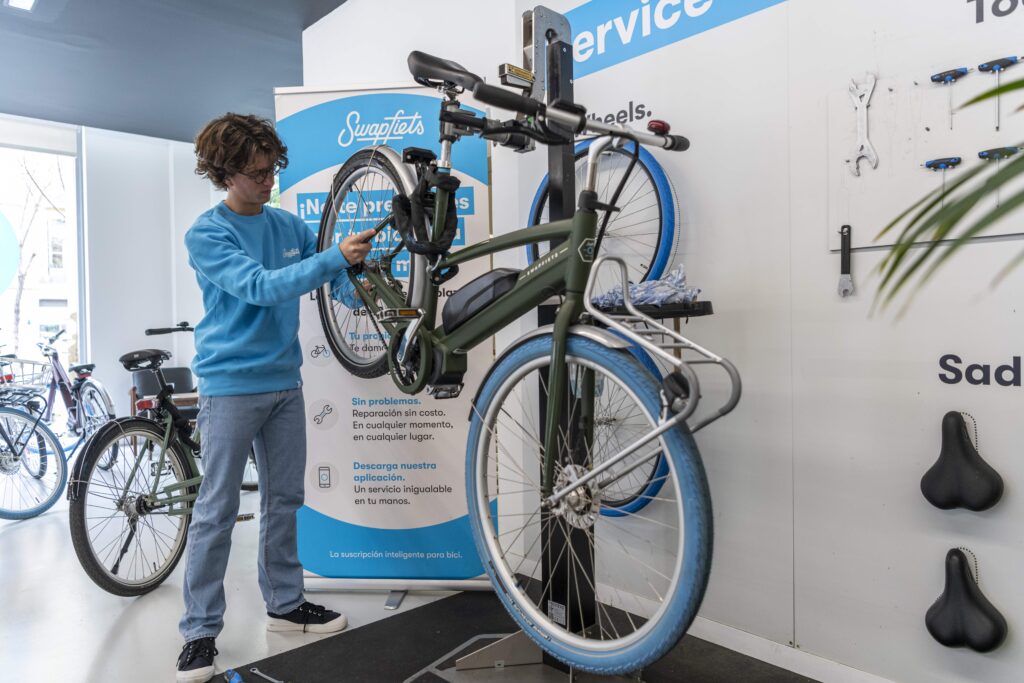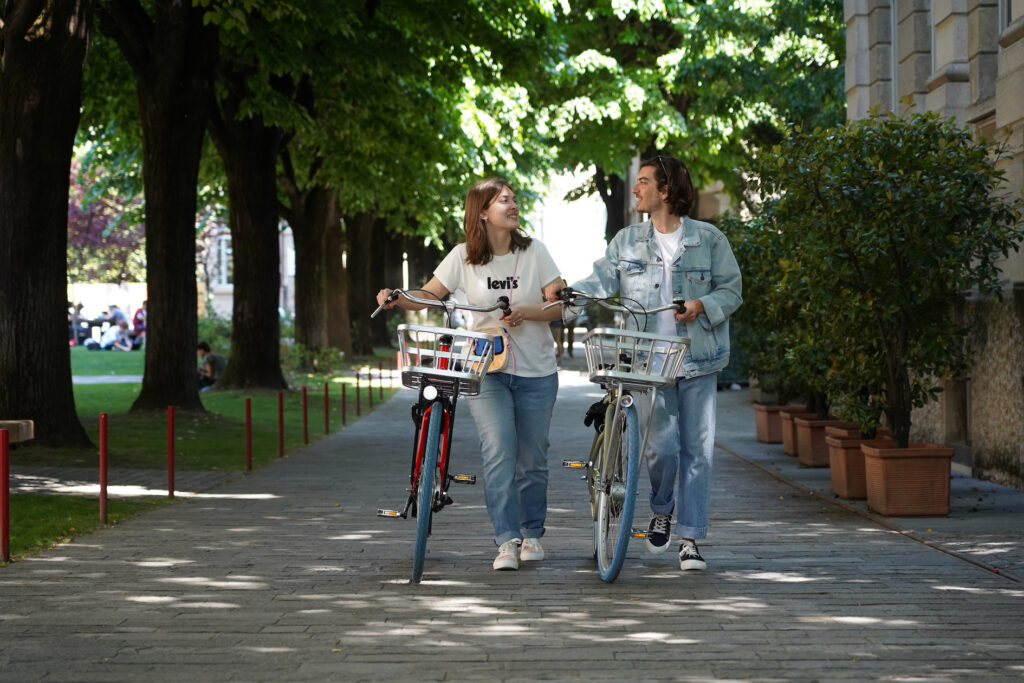What does a Swapfiets warehouse look like?
Warehouses are, to be technical, magical places. For those of you who have never seen the inside of a bike company’s warehouse, imagine the IKEA Market Hall but instead of cupboards there are stacks of bikes reaching to the ceiling, mechanics tinkering away on chains or saddles or handlebars, a wild mix of music streaming out the speakers, and beautifully organized collections of spare parts waiting to be added to your future Swapfiets. All bikes filter through our warehouses at some point, where they are repaired, cleaned, and made ready for their next user. As a result, our mechanics have seen bikes from all walks of life: they have seen bikes that have nothing but a scratch on them and they have seen Frankenstein’s monster bikes that are missing more parts than they have or have an alarming collection of alien parts added on. Swapfiets mechanics – both in stores and in warehouses – know the bikes better than anyone, and provide the bike design team with really important insights about how to improve our bikes. For example, our mechanics noticed that whilst wheels with uneven spokes look cool, they’re hard to fix and they break more than wheels with regular spokes. Along with the bike designers, mechanics also found that completely covering the chain might protect it a bit better from the elements than the partially open design we currently use, however the difference wasn’t enough to justify the difficulty of repairing bikes with these covers. Some master mechanics know the bikes so well that they have even made tools specifically created for Swapfiets bikes – pretty cool!
How do repairs help with 100% circularity?

As a refresher, 100% circularity means that all the parts that go into the bike – the inflow – is 100% circular and that everything that goes off the – the outflow – is 100% circular. In terms of inflow, this means that our bikes need to be made from renewable resources (i.e. reused, refurbished, remanufactured, recycled, or bio-based) and be produced using renewable energy. In terms of outflow, this means there is zero waste. All materials must flow back into the broader system as resources.
Repairs are an integral part of our service and our dedication to circularity. Every time your bike is swapped for another, it is thoroughly checked by one of our in-store mechanics or by a warehouse mechanic. In this way, we are able to make sure that bikes are only being used when they are absolutely safe to be used and are in perfect working condition when handed over to you. This also allows us to continuously fix small things on our bikes: for example, regularly pumping tires, oiling the chain, and checking that the frame is still in good condition means that we can keep our bikes on the road for longer. By replacing parts when they show signs of wear, we can also reduce the risk of parts falling off our bikes as you zoom over cobblestoned streets. This is key to improving the circularity of our service: by extending the lifetime of our bikes and the parts that make up each bike, we reduce the amount of waste associated with our service as well as the number of new parts that need to be ordered to keep our bikes in excellent condition.
Reusing spare parts
For us, it’s important that our bikes are always in working condition. This doesn’t mean that they need to be brand new. This is why when we reuse spare parts as long as they are still structurally safe to use. For this reason, a bike to us is a collection of 160+ parts. For example, if a bike comes in with a broken frame, we will harvest everything that we can from this frame to reuse in other bikes. In this way, we extend the lifetime of each part as long as we can and minimize the amount of waste involved in our service – neat! Stay tuned for our next blog exploring this topic in a bit more detail!
How are you a part of your Swapfiets’ use story?

Every time you cycle rather than drive or take public transport you make your city just a little bit more liveable. But more than just avoiding direct emissions from cars/public transport, how and how often you use your bike impacts the overall climate impact of the bike. On the lifespan side, bringing in your bike for regular and preventative check-ups helps us to make small repairs along the way to prevent big issues later on. For example, if we can pump up your tires regularly, not only is it easier for you to cycle but we can also reduce the risk of tire punctures or rim damage if the tires get too flat. This means we can minimize the number of replacement parts we need to apply to each bike. Furthermore, your use of the bike provides us with crucial data on how to improve our design and our service – we learn a lot on how to be better from you!
In our climate impact calculations, we also account for the impact of e-Bike users charging their batteries. This is highly dependent on the battery range, the time of year (battery capacity temporarily decreases in cold, winter weather), and the type of electricity used to charge the batteries. There are certain behavioral actions you can take to help us reduce this part of our impact. For example, you can make sure to always take your battery off the bike when you park it and to charge the battery correctly and regularly. But the more structural issue of what kind of energy (fossil fuel, nuclear, renewable, etc.) is used to charge your batteries will always impact the efficacy of your behaviors. If all our members switched to renewables, for example, the climate impact of charging our e-Bikes would be close to 0 kg CO2 equivalent!
So, we just want to say a big thank you to all of you wonderful members who help us keep our bikes on the road for years to come!